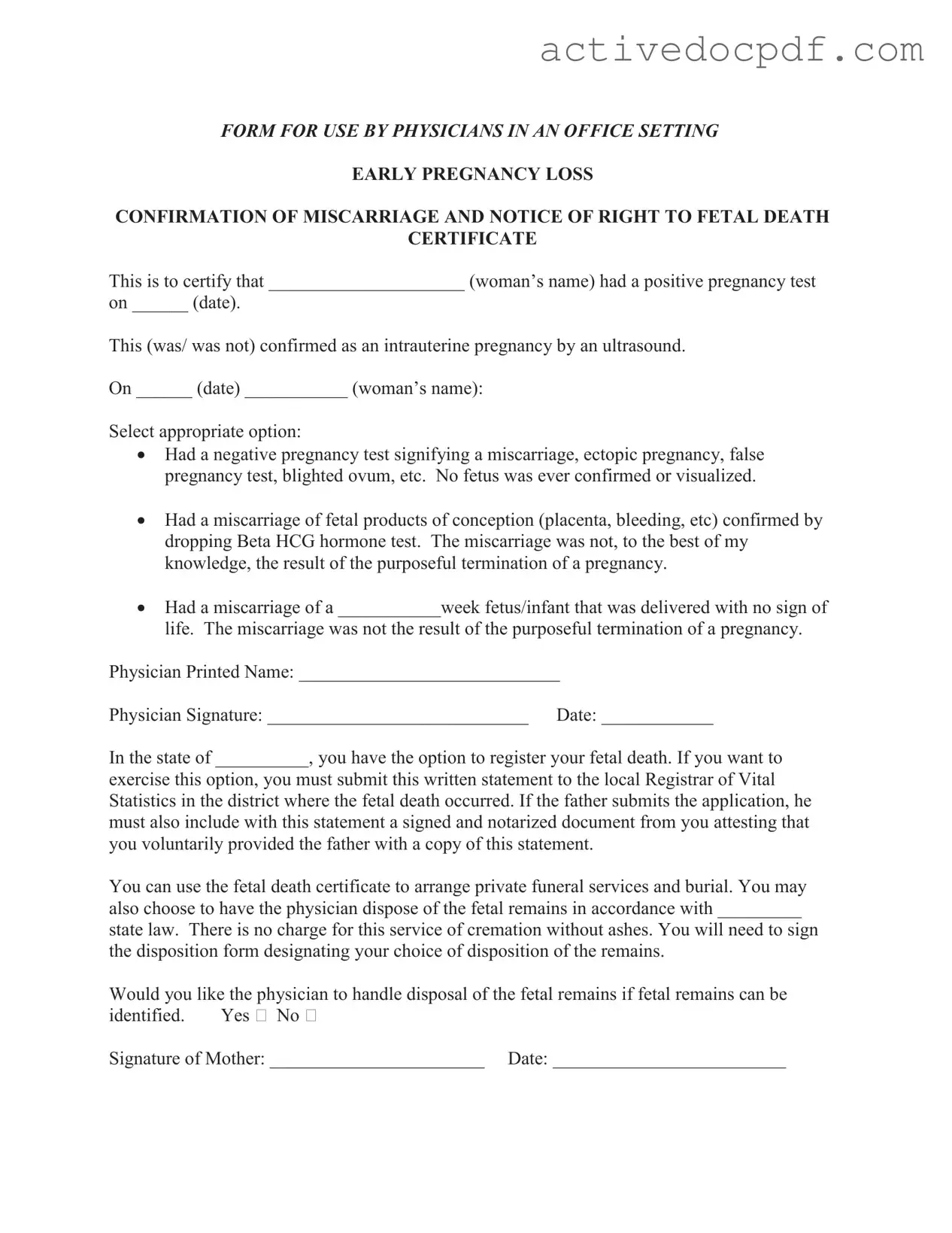The Miscarriage Discharge Paper form serves multiple important functions. Primarily, it confirms that a woman has experienced a miscarriage, providing documentation for both medical and legal purposes. This form is used by physicians in an office setting to certify the details of the miscarriage, including the date of the positive pregnancy test, ultrasound results, and the nature of the miscarriage. Additionally, it informs the woman of her rights regarding the registration of fetal death and the options available for the disposition of fetal remains.
The form includes several key pieces of information. It starts with the woman's name and the date of her positive pregnancy test. It also indicates whether the pregnancy was confirmed via ultrasound. The physician will select from options that detail the nature of the miscarriage, such as whether a fetus was visualized or if the miscarriage was confirmed through hormone testing. The form requires the physician's printed name, signature, and date, ensuring that it is an official document. Lastly, it outlines the woman's rights regarding the registration of fetal death and options for handling fetal remains.
If a woman wishes to register a fetal death, she must submit the completed Miscarriage Discharge Paper form to the local Registrar of Vital Statistics in the district where the fetal death occurred. This process may also involve the father, who must include a signed and notarized document from the woman, confirming that she provided him with a copy of the statement. Registration is an important step that can provide closure and allow for the issuance of a fetal death certificate, which may be needed for various purposes, including arranging memorial services.
What options are available for the disposition of fetal remains?
The form provides several options for the disposition of fetal remains. A woman may choose to have the physician handle the disposal in accordance with state law. This can include cremation without ashes, which is offered at no charge. Alternatively, she may opt for private funeral services and burial. It is essential for the woman to sign the disposition form, indicating her choice of how the remains should be treated. This ensures that her preferences are respected during a difficult time.
There is no charge for the service of cremation without ashes, as indicated in the form. However, if a woman chooses to arrange for private funeral services or burial, there may be associated costs, which would vary depending on the services selected. It is advisable for individuals to consult with the funeral service provider to understand any potential expenses. Understanding these options can help in making informed decisions during a challenging period.
